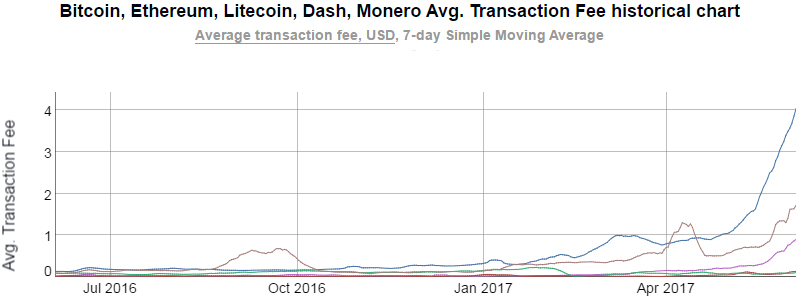**This is part of our series highlighting startups who share our mission of trying to make people’s lives just a little easier**
2017 wasn’t the year of the Rooster, it was the year of cryptocurrency.
Bitcoin took the world by storm, dragging digital money from the depths of the black market and bringing it to the general public. The meteoric rise saw investors clamoring to put their name to it and, at one point, the currency rocketed to more than 1,900%.
The storm hasn’t died down yet, either.
In fact, the acquisition of cryptocurrencies by monetary mega-lords like Wall Street means the fad is unlikely to go away any time soon. Blockchain, the technology behind it, is proving to be revolutionary – maybe even more revolutionary than the internet itself.
And yet, it’s difficult to imagine going into your local store and paying in digital money.

So, while the digital world is increasingly become a part of everyday life, is there a way that cryptocurrencies will make their way into the real world?
You know, the world that isn’t tucked away behind a screen?
The answer is yes.
This year is a groundbreaking year for the crossover of the internet and real life. Later in 2018, the first cryptocurrency banknotes will be hitting the streets and, as of now, it’ll be the only mass-produced hardware carrier for digital assets.
The incredible feat of technology has been created by Tangem.
The company has created smart banknotes that individuals can use in-store like ordinary money. Each note has a built-in chip that that can be uploaded with cryptocurrency in an amount chosen by the user.
The aim? To allow brick-and-mortar transactions where consumers can simply hand over a banknote just like fiat money (which is normal banknotes and coins in layman’s terms) and pay for their everyday goods.
Groundbreaking, right?
It sounds like it, yes, but Tangem isn’t the first physical bitcoin. In fact, the high-tech project has a number of predecessors, the biggest of which was Casascius. But Tangem is potentially the most exciting prospect in the Bitcoin world as of yet, as it means the digital currency can now cross over into the real world in a new and unique way.
What Exactly Is Tangem?
Tangem is the name of the project, but it’s also the name of the “smart banknotes”. This hardware has an inserted chip that can hold bitcoin and other cryptocurrencies, and using them will be just like paying in fiat money.
Transactions carried out using Tangem will be free and instant, but there’s one question that keeps cropping up: surely the whole point of digital currencies is that they live solely online?
But this is not the case with Tangem. While the currency will still be stored in blockchains on the web, the smart notes will be available for consumers to get their hands on all over the world, including in retail chains and certain ATMs.
For crypto-fans, this is a huge step forward. It’ll be the first time ever that they can hold a physical bitcoin in their hands and pay with it like fiat money.

Why Is This Project Unique?
When cryptocurrencies first popped up on the market, there were two different types of chipsets: one that was considered “unhackable”, and another that could manage complex calculations but wasn’t as safe and secure.
In 2017, things changed.
The secure chip was improved so that it could support complex calculations and remain safe. On top of that, it didn’t need as much power to run, making it more affordable for mass production.
This is the new technology that Tangem has tapped into. Today, chip tech is military grade, making it virtually tamper-proof. And, as Tangem co-founder Andrew Pantyukhin says, hacking a single banknote is completely uneconomical.
What’s the Point of Smart Banknotes?
In a bid to shed the previously tainted history of cryptocurrency (one that was heavily associated with the dark web), these smart banknotes are an attempt to bring bitcoins and other digital currencies to the masses to prove, perhaps, that they can be just as useful as fiat money.
When asked why we need these kind of banknotes that, essentially, turn a digital currency into something that is no longer wholly “digital”, Pantyukin explained that the smart notes would be easier for non-cryptos to use because it is so similar to fiat money.
But regardless of this, the user still needs to have a cryptocurrency account online in order to exchange the money from their “account” to the vendor. Pantyukin adds that Tangem is just a really simple way to use cryptocurrency that is still very difficult to use for those not in-the-know.

The Future of Cryptocurrency in the Real World
Turning cryptocurrency into physical coins and notes will no doubt make it more accessible to the general public, and it might even convert those who were skeptical about the currency in the past.
But will it really make a difference? Will people actively stop using fiat money and turn to bitcoin and its digital currency siblings instead?
Perhaps bringing cryptocurrency to the masses in this way will mean more people are likely to use it. But again, this begs the question of what the point is. Maybe one day, fiat money will become extinct and we’ll all have crypto accounts and smart banknotes that we can use anywhere in the world – sort of like a global currency that doesn’t live in any one place.
Either way, the emergence of Tangem is another step forward for the cryptocurrency industry, and we’ll only start to see how high the demand is for this form of currency when the banknotes are released later in the year.
Until then, we’ll have to make do with paying in fiat money in our local store.


